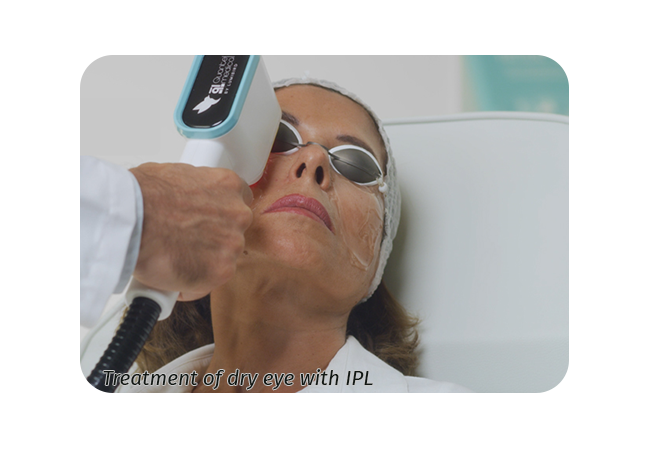What Causes Dry Eye Syndrome?
Dry eye syndrome can arise from a variety of factors, often involving a combination of underlying issues. While some causes are rooted in environmental or lifestyle factors, others are related to systemic health conditions or medications. Below are some of the most common causes of dry eye syndrome:
Aging
As we age, our bodies undergo numerous changes, and tear production is no exception. Tear production tends to decrease with age, which is why dry eye is more common in older adults, particularly those over 50. This natural decline in tear production makes the eyes more vulnerable to environmental stressors such as wind, dry air, and prolonged screen time, exacerbating dry eye symptoms.
Hormonal Changes
Hormonal fluctuations can have a significant impact on tear production. Women are particularly susceptible to dry eye during hormonal changes that occur during menopause, pregnancy, or while using oral contraceptives. Estrogen, a key hormone in regulating tear production, tends to decrease during these times, leading to reduced tear volume and quality. Understanding the hormonal component of dry eye can be crucial in identifying and managing the condition, especially for women in these stages of life.
Medications
Certain medications can interfere with tear production or tear quality, resulting in dry eye symptoms. These medications include antihistamines, decongestants, antidepressants, and blood pressure medications. These drugs can reduce tear secretion or alter the composition of tears, making them less effective in keeping the eyes lubricated.
People on long-term medication may be more prone to developing dry eye, and it's essential to discuss potential side effects with a healthcare provider if symptoms arise.
Environmental Factors
Environmental conditions can play a significant role in the onset or worsening of dry eye symptoms. Exposure to wind, cigarette smoke, dry climates, and air conditioning can all increase tear evaporation. Prolonged exposure to these conditions without adequate protection, such as wearing sunglasses or using a humidifier, can lead to a rapid evaporation of the tear film, causing dryness, irritation, and discomfort.
Individuals living in arid climates or frequently working in air-conditioned environments should take extra precautions to protect their eyes.
Eye Surgery
Eye surgeries, such as cataract surgery and refractive surgery (LASIK), can disrupt the normal tear production process and damage the surface of the eye. These procedures may affect the corneal nerves, which play a critical role in signaling tear production. As a result, patients who undergo these surgeries may experience either temporary or long-term dry eye symptoms.
It's essential for individuals planning eye surgery to discuss the potential risks of dry eye with their surgeon and consider pre- and post-operative strategies to manage the condition.
Screen Use
In today's digital age, prolonged use of screens, whether from computers, smartphones, or tablets, is a common contributor to dry eye syndrome. When staring at a screen for extended periods, people tend to blink less frequently, causing tears to evaporate more quickly. The reduced blink rate not only accelerates tear evaporation but also prevents proper tear distribution across the eye's surface, leading to discomfort, dryness, and even blurred vision.
Taking regular breaks and consciously blinking can help mitigate the effects of screen use on dry eye symptoms.
Health Conditions
Certain systemic health conditions can contribute to dry eye syndrome. Autoimmune diseases like Sjögren's syndrome can reduce tear production by attacking the glands responsible for producing tears. Additionally, conditions such as diabetes and thyroid disorders can also disrupt tear production and tear quality.
In cases where dry eye is associated with an underlying health condition, managing the primary disease is crucial in controlling dry eye symptoms.
Eyelid Problems
Eyelid disorders, such as blepharitis, entropion, or ectropion, can interfere with proper tear distribution and drainage. Blepharitis, a condition characterized by inflammation of the eyelid margins, can block the Meibomian glands, leading to poor tear quality. Entropion, where the eyelids turn inward, or ectropion, where they turn outward, can also cause tears to drain improperly, exacerbating dry eye symptoms.
Proper diagnosis and treatment of eyelid disorders can be instrumental in relieving dry eye symptoms and preventing further complications.
Meibomian Gland Dysfunction (MGD)
The Meibomian glands, located along the edges of the upper and lower eyelids, play a crucial role in maintaining a healthy tear film by producing an oily substance called meibum. This oil forms the outer layer of the tear film, preventing tears from evaporating too quickly. When these glands are blocked or malfunctioning, a condition known as Meibomian Gland Dysfunction (MGD), the tear film becomes unstable, leading to dry eye symptoms.
MGD is one of the most common causes of dry eye and requires specific treatments to address the underlying gland dysfunction.
Contact Lenses
Long-term use of contact lenses can contribute to dry eye symptoms by disrupting the tear film and decreasing tear production. Contact lenses can cause mechanical irritation to the surface of the eye and reduce the amount of oxygen reaching the cornea, leading to discomfort and dryness.
People who wear contact lenses regularly are at an increased risk of developing dry eye, particularly if they do not follow proper lens care routines or use lenses for extended periods without breaks.


